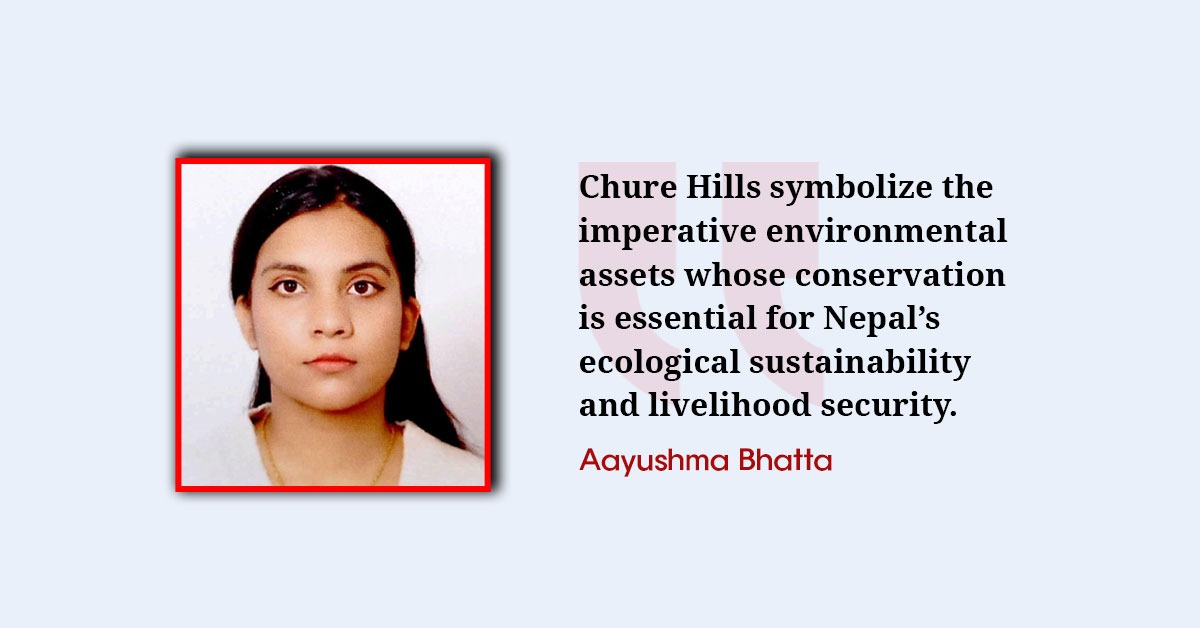

KATHMANDU: The Chure, lower slopes of high himalayas serves geological frame of reference and delicate environmental stripe strectching across 36 districts in Nepal spanning around 13% of nations landmass. Chure region plays vital role in sustaining hydro-ecological stability, soil proportion, reactivating subsurface water and nurturing varied flora and faunas. Still rising gravel, sand and mining operations-followed by township development and basic development are causing notable environmental depletion. With intense downstream impact on incidence of flooding, hydrological stability, and variety of life forms.
Current data from Nepal’s Department of Mines and Geology recognizes 92 legally endorsed Rock quarries within 14 districts of Chure region. Despite that the precise scale extraction goes beyond these metrics due to excessive illegal mining Often driven by Sophisticated administrative and financial networks. As an example, the Kamala Mai river basin solo is predicted to produce 6.5 million cubic meters of sand and gravel yearly.
A massive portion of which is hauled to urban hubs and transported to neighboring country India. Unbiased evaluation recommends that total extraction mass may be twice as much of the legal records Pointing out the Broad impact of unsupervised mining.
The ecological consequences of heavy mining are multidimensional and intense. The sediment movement assessment demonstrates that rivers emerging from Chure hill carry between 780 and 20,000 tones of the sediments in every square kilometer yearly. Increasing in volume of soil
erosion and collapsing slope. This topographical interference surges sedimentation in the downstream river system which is responsible for worsening the flood risks in flatland and nearby regions. At the same time deforestation and surface soil depletion has reduced the natural water holding potential of hills leading to decreasing in underground water levels and intensified droughts and susceptibility for thousands of residents who were reliant on springs or wells.
Indigenous communities across districts like Mohottari, Sarlahi, Dhanusha state serious impacts on people and environment such as drying rivers, wells and spring, intensified stream bank degradation and decline in forest cover. These changes directly affect crop yields and cultural livelihood practices leading to financial hardship and higher migration rates.” As the hills vanish, so do our means to survive” remarks with sorrow, a farmer residing in Mohottari Mr Ram Kumar Yadav signaling to common local worry.
Although institutional frameworks and legal enforcement actions including top court interventions at safeguarding the chure ecosystem despite enforcement lack stability. Political backing and entitled parties frequently concess permit process with local authority granting extraction authorizations without complete ecological impact assessment. This mode of Governance gap obstruct sustainable planning and reinforce ongoing extraction practices.
The deterioration of the Chure Hill’s causes a high level of risk outside the juridictions of Nepal, given the region’s key role and responsibilities in the hydrology of Greater Ganges Basin. The decline of forest cover and soil resilience jeopardizes the biotic variety, compromises access to water and also minimizes the environmental services. Researches highlights that the quick monetary gains from sand mining fails to make up for sustained ecological and societal damaged incurred.
To reduce these complications, a systematic shift in the direction of long-lasting resource management is a critical need. Transiton to alternative building practices such as processed sand and repurposed aggregates reduce strain on geological deposits. Reinforcing institutional frameworks, promoting open governance in permits allocation, and strengthening the participatory mechanism are critical to prevent unsactioned extraction, moreover afforestation and ecological recovery schemes are crucial to prevent slope failure and boost groundwater recharge and runoff control. Holistic land use management harmonized with disaster risk management plans could enhance the lowering of exposure to flood and drought events.
Overall the Chure Hills symbolize the imperative environmental assets whose conservation is essential for Nepal’s ecological sustainability and livelihood security. Dealing with the complex challenges by sand mining calls for unified policy intervetions, accountable governance and inclusive stakeholders involvement. Solely by means of wide-ranging and sustained commitments can safeguard Nepal’s integrity of Chure ecological community and froster sustainable livelihoods for this generation and those to come.